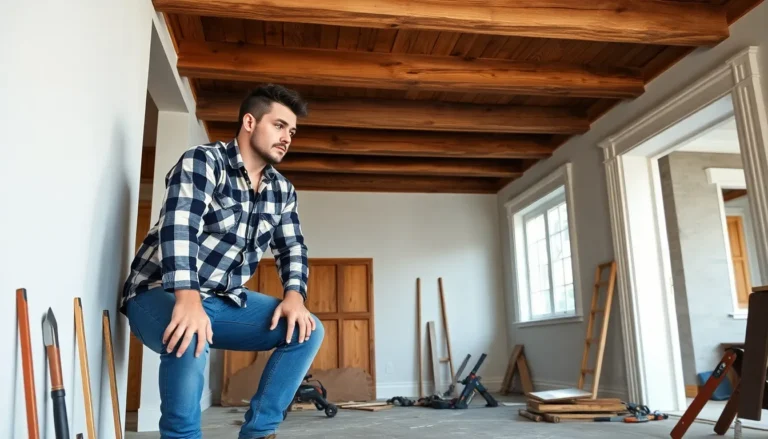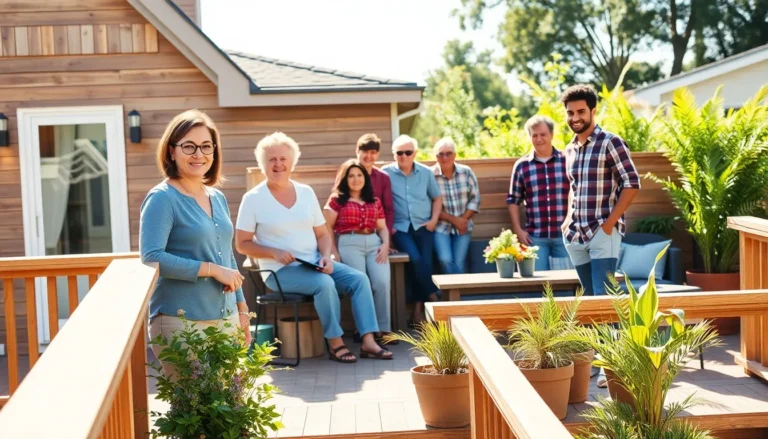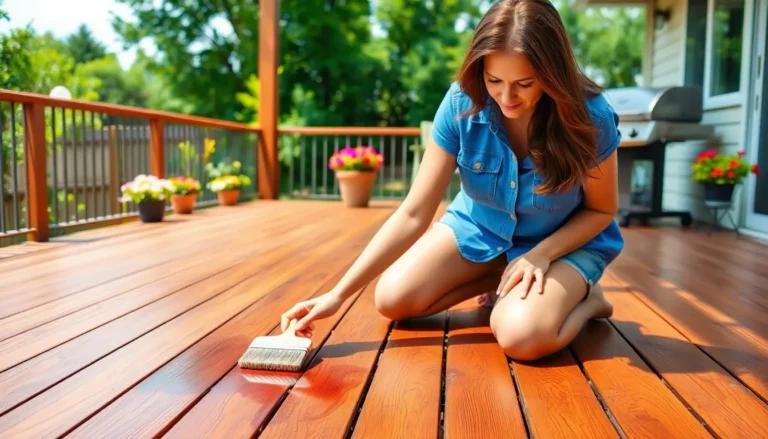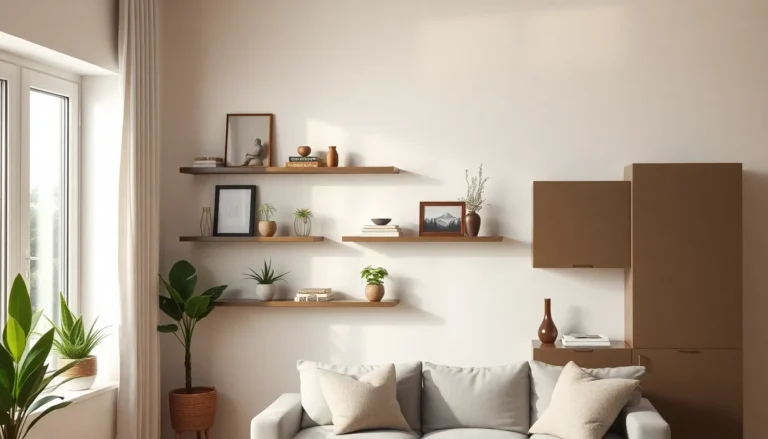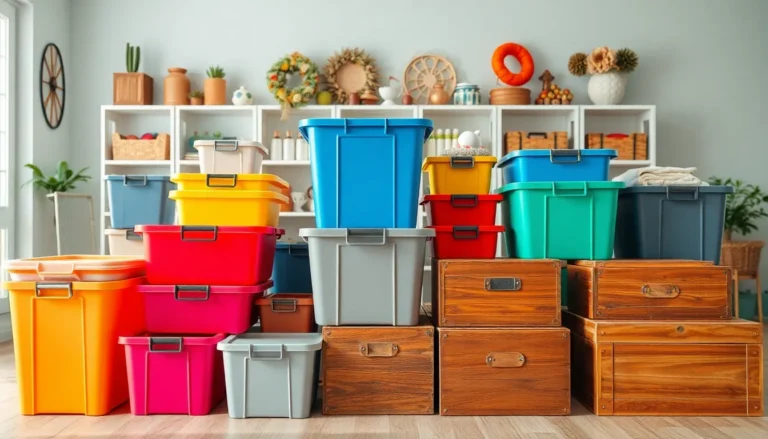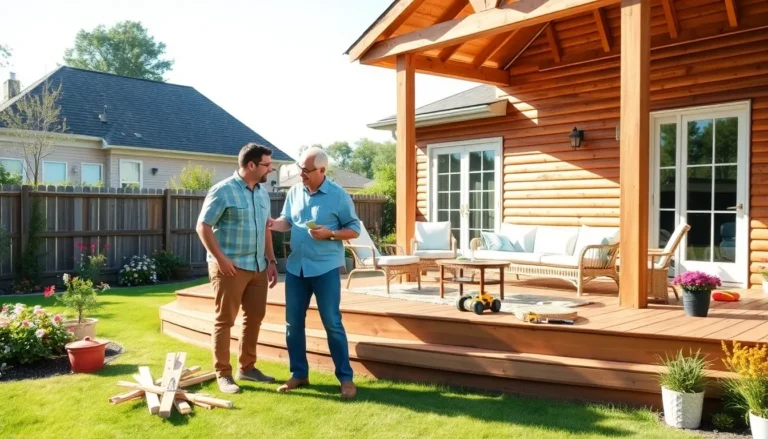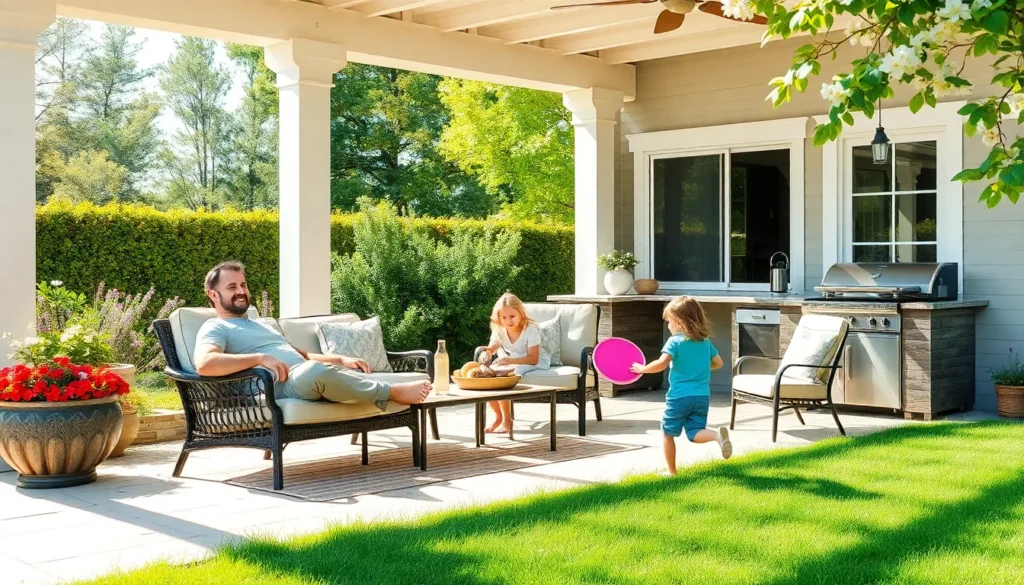Table of Contents
ToggleIn today’s fast-paced world, outdoor living spaces have become a sanctuary for relaxation and connection with nature. Whether it’s a cozy patio, a sprawling deck, or a vibrant garden, these areas offer a perfect escape from the daily grind. They invite individuals and families to enjoy fresh air, sunshine, and the beauty of their surroundings.
Transforming an outdoor area into a functional and inviting space can enhance one’s lifestyle. With the right design elements and furnishings, it’s possible to create an oasis that caters to both entertainment and tranquility. From outdoor kitchens to serene seating arrangements, the possibilities are endless, making outdoor living an essential aspect of modern home design.
What Is An Outdoor Living Space?
An outdoor living space refers to any exterior area designed for recreation, relaxation, and socializing. Such spaces often include patios, decks, balconies, and landscaped gardens. These environments extend one’s home into the outdoors, providing opportunities for fresh air and natural beauty.
Outdoor living spaces can be customized with various features. Furniture, fire pits, and lighting enhance comfort and ambiance. Amenities may include outdoor kitchens, dining areas, or seating arrangements, allowing for entertaining guests or quiet family moments.
The design plays a crucial role in functionality. Open layouts optimize space, while strategic landscaping offers privacy and aesthetic appeal. Incorporating natural elements, like plants and water features, enriches the experience, creating a harmonious outdoor environment.
By investing in outdoor living spaces, homeowners gain an additional area for leisure and activity. These spaces contribute to a lifestyle that values connection with nature and fosters relaxation away from the chaos of daily life.
Benefits Of An Outdoor Living Space
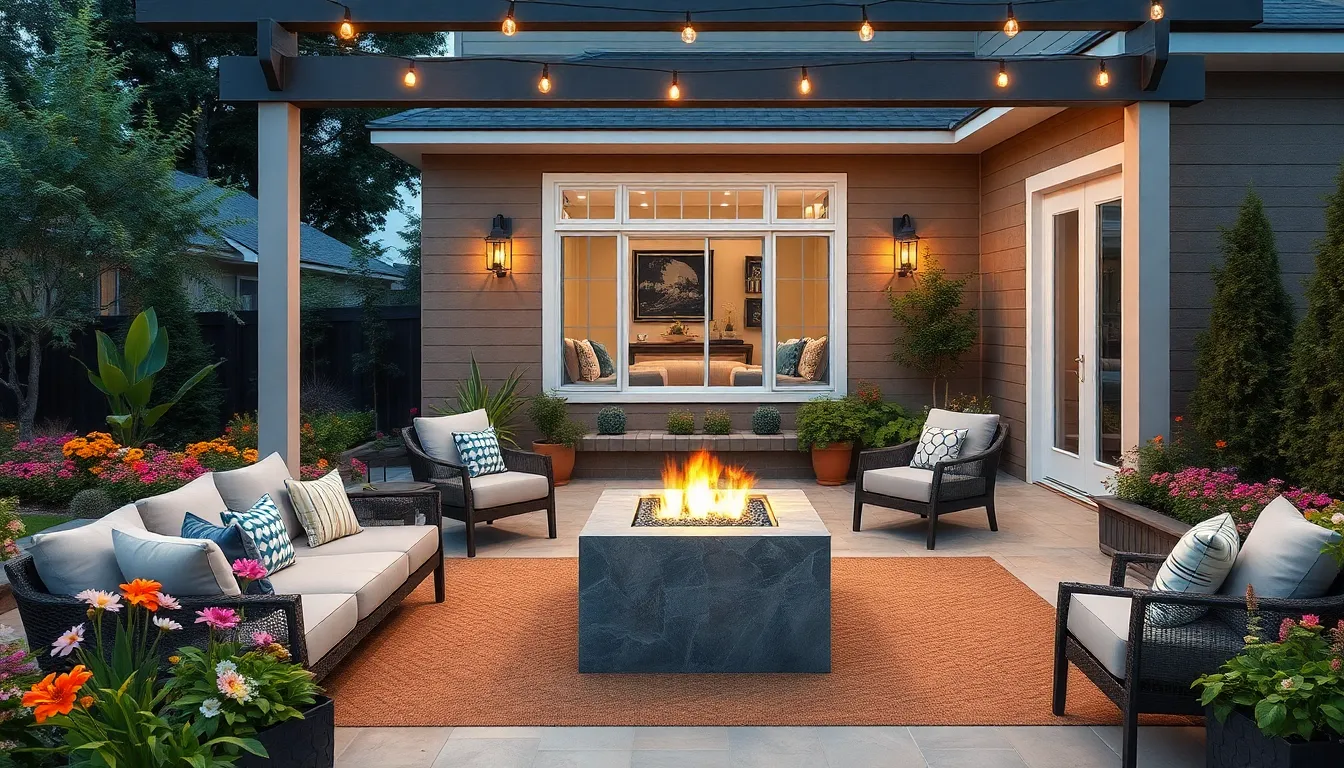
Outdoor living spaces offer numerous advantages that significantly enhance both personal enjoyment and property value. With thoughtful design, these areas create inviting environments that encourage relaxation and social interaction.
Enhanced Aesthetics
Enhanced aesthetics transform outdoor living spaces into visual delights. Thoughtfully chosen furnishings, plants, and decorations create cohesive styles that complement a home’s architecture. Design elements like lighting can highlight features such as gardens and seating areas, further elevating the space’s beauty. Tailoring color schemes and layouts results in visually appealing areas that attract both homeowners and visitors.
Increased Property Value
Increased property value stems from well-designed outdoor living spaces. According to the National Association of Realtors, properties with outdoor features often sell for up to 12% more than similar homes without such amenities. Outdoor kitchens, fire pits, and landscaped patios attract potential buyers and provide appealing spaces for relaxation and entertaining. Investing in outdoor enhancements not only improves quality of life but also contributes to a home’s marketability.
Improved Lifestyle and Wellbeing
Improved lifestyle and wellbeing characterize the benefits of outdoor living spaces. Access to fresh air encourages outdoor activities like dining, reading, or socializing, promoting a healthier lifestyle. Natural surroundings reduce stress levels and enhance mental clarity, enabling individuals to connect with nature. Research indicates that spending time outdoors contributes to increased happiness and overall satisfaction, creating a harmonious balance between indoor and outdoor living.
Essential Elements Of Outdoor Living Spaces
Creating an inviting outdoor living space relies on several key elements that enhance comfort, functionality, and aesthetics. These components critically shape the overall experience enjoyed within these areas.
Furniture and Seating
Selecting appropriate furniture and seating is vital for comfort and style. Options include weather-resistant materials such as teak, aluminum, and synthetic wicker, which withstand outdoor conditions. Comfortable seating arrangements like sectionals and lounge chairs promote relaxation and social interaction. Tables, whether dining or coffee-sized, facilitate gatherings and dining experiences. Including cushions and throw pillows adds comfort and personalization, allowing occupants to enjoy extended outdoor stays.
Lighting Options
Effective lighting transforms outdoor spaces, making them usable after sunset and creating ambiance. Options include string lights for a casual atmosphere, lanterns for mobility, and in-ground LED lights for pathways and borders. Recessed lighting in overhangs or pergolas provides subtle illumination, enhancing the aesthetic appeal. Solar lights offer energy efficiency and ease of installation. Layering lighting types, such as focused task lighting with soft ambient illumination, adds depth and character to the overall design.
Landscaping Features
Landscaping contributes significantly to the aesthetic and functional aspects of outdoor living spaces. Incorporating native plants supports local biodiversity and reduces maintenance. Features such as flower beds, shrubs, and trees create natural borders and provide shade. Hardscape elements like patios, paths, and retaining walls ensure usability and stability in the outdoor area. Water features, such as fountains or ponds, add a serene touch, enhancing the relaxing atmosphere. Thoughtful landscaping design can create visual interest while maintaining privacy and defining outdoor areas.
Designing Your Outdoor Living Space
Designing an outdoor living space requires careful thought about various elements that enhance usability and aesthetics. Key considerations include location and the integration of natural elements.
Choosing The Right Location
Selecting a location significantly impacts the effectiveness of an outdoor living space. Consider these aspects when choosing:
- Sunlight: Identify areas that receive adequate sun exposure, as this influences comfort and ambiance throughout the day.
- Accessibility: Prioritize locations that connect well with indoor spaces, facilitating easy movement and flow during gatherings.
- Privacy: Search for spots that provide a sense of seclusion from neighbors and street views, enhancing relaxation and comfort.
- Views: Choose areas that offer scenic vistas or desirable landscapes, creating an inviting atmosphere for both relaxation and socializing.
Incorporating Natural Elements
Integrating natural elements enriches the outdoor living experience, fostering a harmonious environment. Focus on these components:
- Landscaping: Utilize native plants for low maintenance and ecological balance, enhancing the visual appeal and biodiversity.
- Water Features: Introduce ponds, fountains, or waterfalls for soothing sounds and movement, promoting tranquility in the space.
- Hardscapes: Include stone pathways, decorative boulders, or patios made of natural materials to provide structure and visual interest.
- Trees and Shrubs: Plant trees for shade and design shrubs for privacy, setting the stage for a serene outdoor environment.
By considering location and incorporating natural elements, homeowners create outdoor living spaces that are both inviting and functional, effectively extending their home’s livable area.
Maintenance Tips For Outdoor Living Spaces
Maintaining outdoor living spaces ensures longevity and continued enjoyment. Seasonal changes and regular upkeep play crucial roles in preserving their beauty and functionality.
Seasonal Considerations
Seasonal maintenance safeguards outdoor living spaces throughout the year.
- Spring: Inspect furniture for winter damage. Clean and treat wood surfaces to prevent decay. Plant seasonal flowers for vibrant color.
- Summer: Ensure irrigation systems function properly. Trim overgrown plants to promote healthy growth. Regularly check for pests and treat affected areas.
- Fall: Clear leaves and debris from surfaces and gutters to prevent mold and water damage. Store cushions and furniture to protect against winter weather.
- Winter: Winterize amenities such as outdoor kitchens or fire pits. Cover furniture with weather-resistant covers to protect against snow and ice.
Cleaning and Care
Regular cleaning prevents dirt buildup and maintains a pristine appearance in outdoor living spaces.
- Furniture: Use mild soap and water to clean weather-resistant furniture. For fabric cushions, check care instructions and use appropriate cleaning methods.
- Surfaces: Sweep patios and decks regularly. Power wash hard surfaces at least once a year to remove stains and mold.
- Plants: Regularly water, prune, and fertilize plants according to their specific needs. Use organic pesticides to manage pests without harming the environment.
- Lighting: Check outdoor lighting systems for burned-out bulbs. Clean fixtures to maintain brightness and aesthetic appeal.
By addressing seasonal needs and implementing regular cleaning practices, outdoor living spaces remain inviting and enjoyable for years.
Creating an outdoor living space is more than just an extension of the home; it’s a pathway to enhanced well-being and enjoyment. By thoughtfully designing these areas with the right furnishings and landscaping, homeowners can cultivate a personal oasis that promotes relaxation and connection with nature.
The benefits extend beyond mere aesthetics and comfort. A well-crafted outdoor space can significantly boost property value while encouraging a healthier lifestyle. With proper maintenance and seasonal care, these inviting environments can remain beautiful and functional for years to come. Embracing outdoor living allows individuals and families to fully appreciate the joys of nature right outside their door.

